Vanilla Custard (Crème Anglaise)
This post may contain affiliate links. See my disclosure policy.
This classic English vanilla custard recipe, Creme Anglaise, is very simple and quick to make and the result is absolutely delicious served with dessert! Irresistibly creamy and smooth and infused with vanilla!
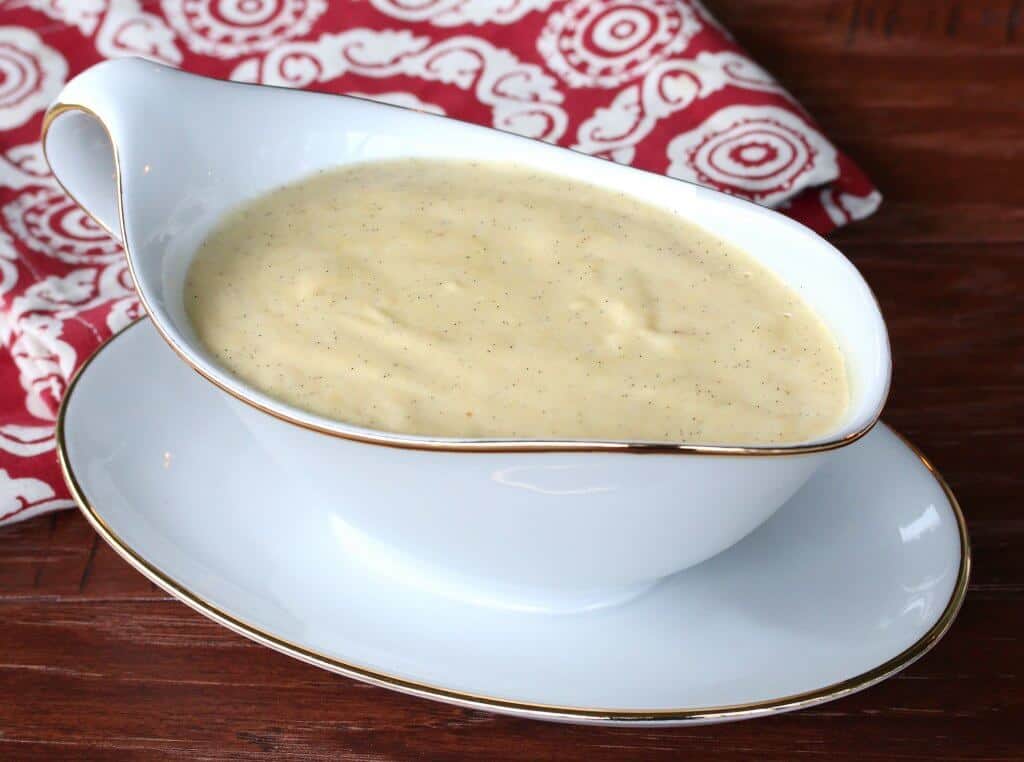
Custard serves two basic culinary purposes: Either as a thick pastry cream (crème pâtissière) or a thin dessert sauce for pouring (crème anglaise, French for “English cream” because of its popularity in English desserts). The difference between the two is its thickness and that varies depending on much cornstarch or flour is used. A very thin custard sauce, for example, won’t use either, it simply relies on the egg yolks to provide body.
The egg in custard is sensitive and curdles very easily if the temperature rises even by a few degrees, and for that reason it’s often cooked using a double boiler. However, we’re going to use a regular saucepan on a stove and it works perfectly as long as you’re mindful of the temperature, i.e., do not let it exceed 176 degrees F (80 degrees C). The custard begins setting at 158 degrees F (70 degrees C. The easiest thing to do is use an instant read thermometer but the more you make it you’ll get used to the look and feel of it and instinctively know when to remove it from the heat.
Today we’re going to make a custard dessert sauce, so a thinner consistency that you can use for pouring. A classic example is Spotted Dick, a traditional English steamed pudding served with this vanilla custard sauce.
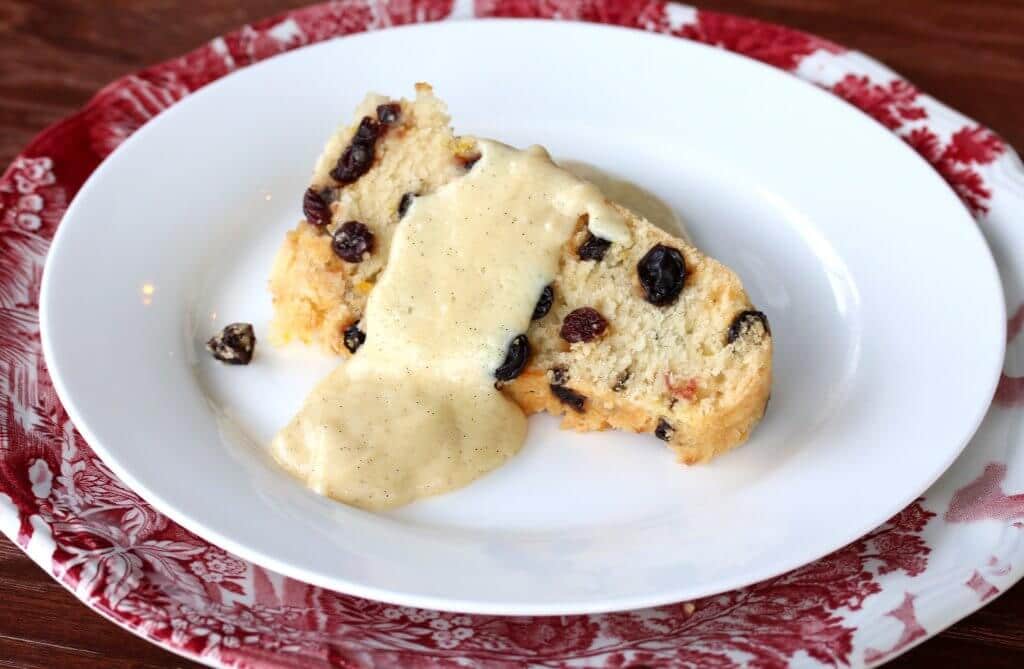
Extremely versatile and very quick and easy to make, everyone needs to know how to make a vanilla custard sauce!
Vanilla Custard Recipe
Let’s get started!
In a medium-sized bowl, whisk together the egg yolks, sugar and cornstarch until the mixture is smooth.
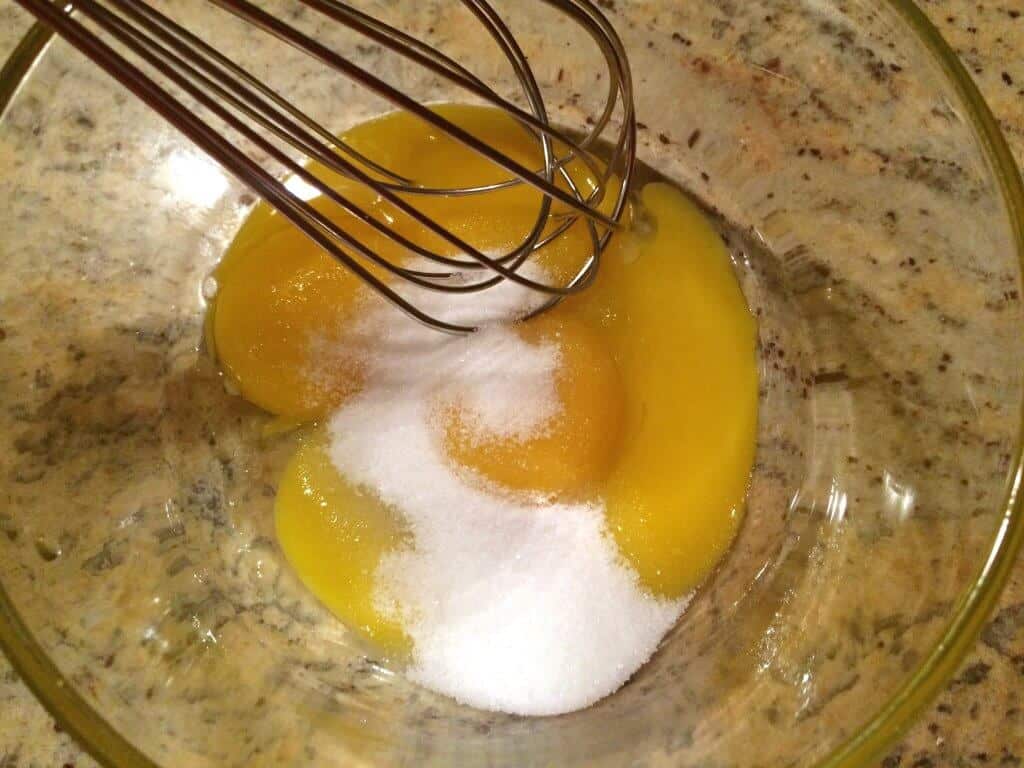
Heat the milk, cream and vanilla in a small saucepan just until bubbles form along the edges of the pan.
A traditional custard calls for a vanilla bean that’s been slit open lengthwise so the vanilla flecks and flavor can infuse the sauce. An excellent substitute, and what I use most of the time, is a quality vanilla bean paste. Don’t use vanilla extract, it doesn’t begin to compare with paste for this custard sauce.
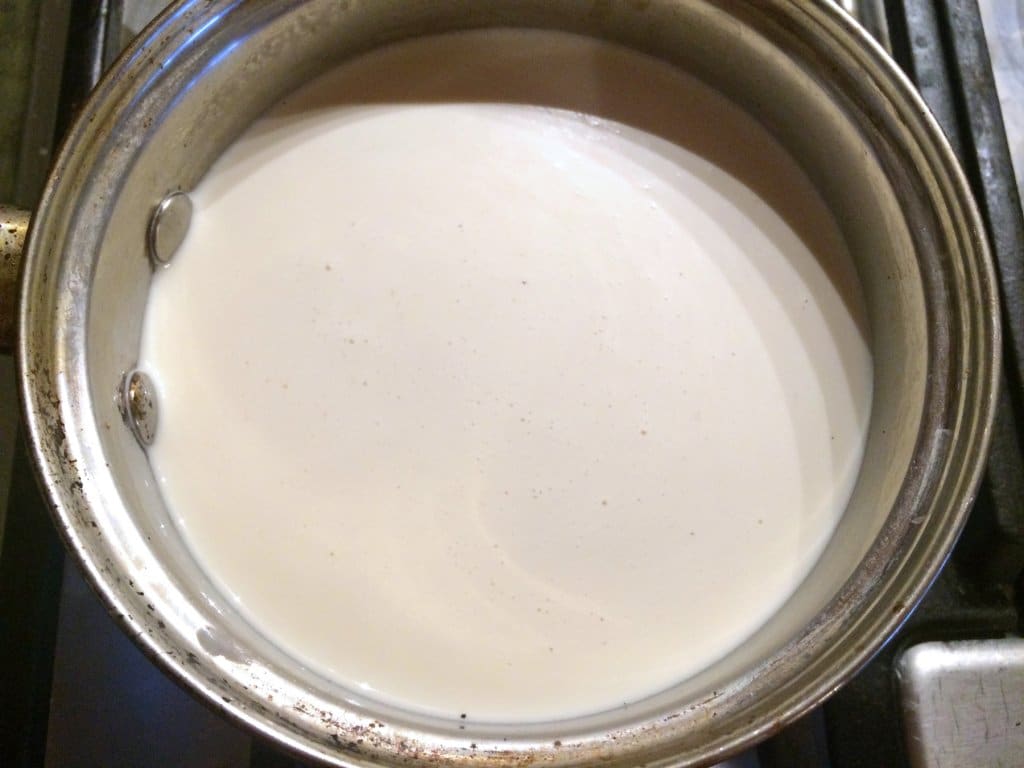
Remove 1/2 cup of the hot cream and whisk it into the egg mixture, whisking constantly.
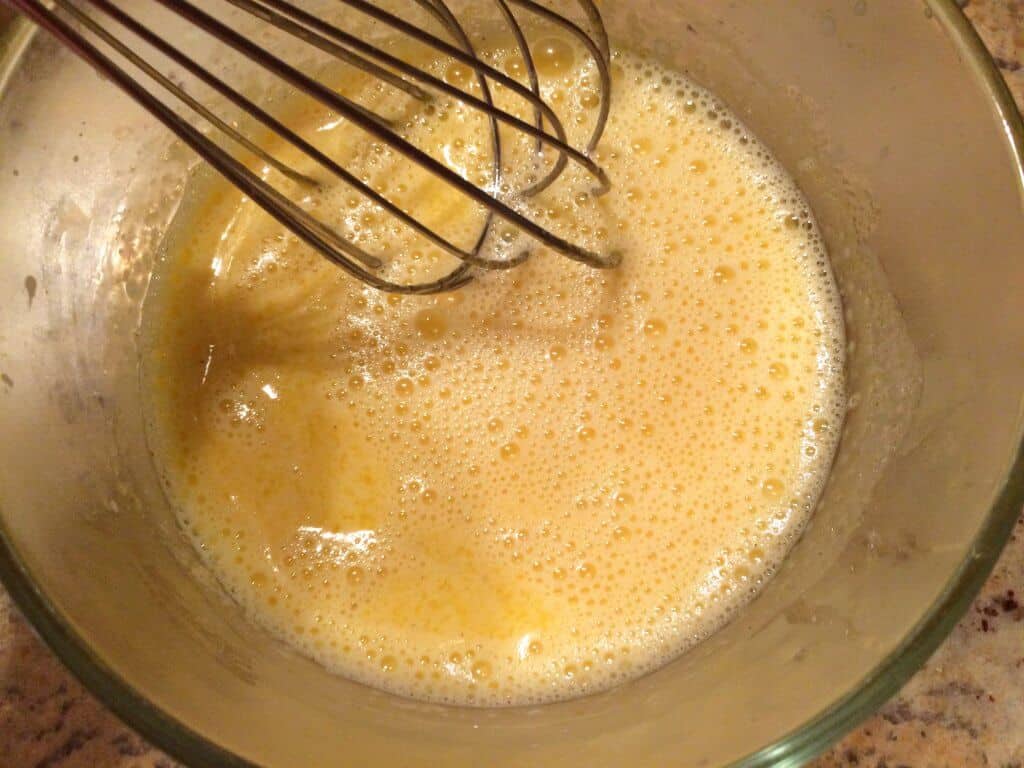
Gradually pour the egg yolk mixture back into the saucepan with the rest of the cream mixture, whisking constantly to prevent clumping. Continue to cook, whisking constantly, until the mixture leaves a path on the back of spoon when you draw your finger across it. DO NOT BOIL.
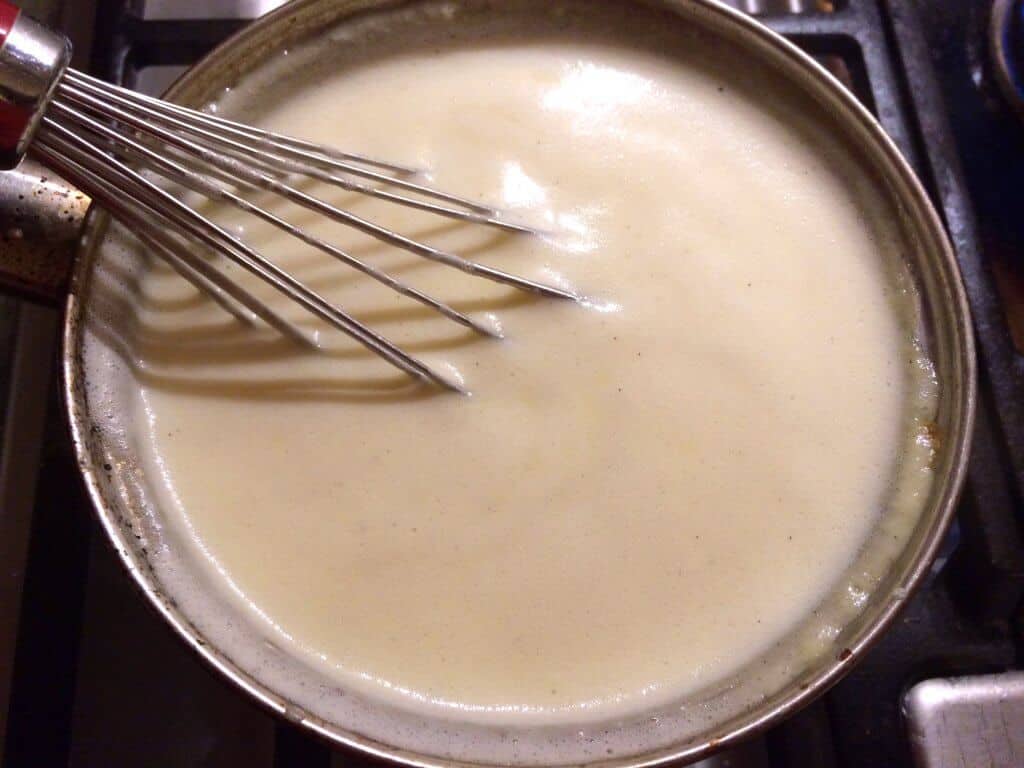
Thickness will vary depending on how much cornstarch you use (or if you use none at all for a very thin sauce).
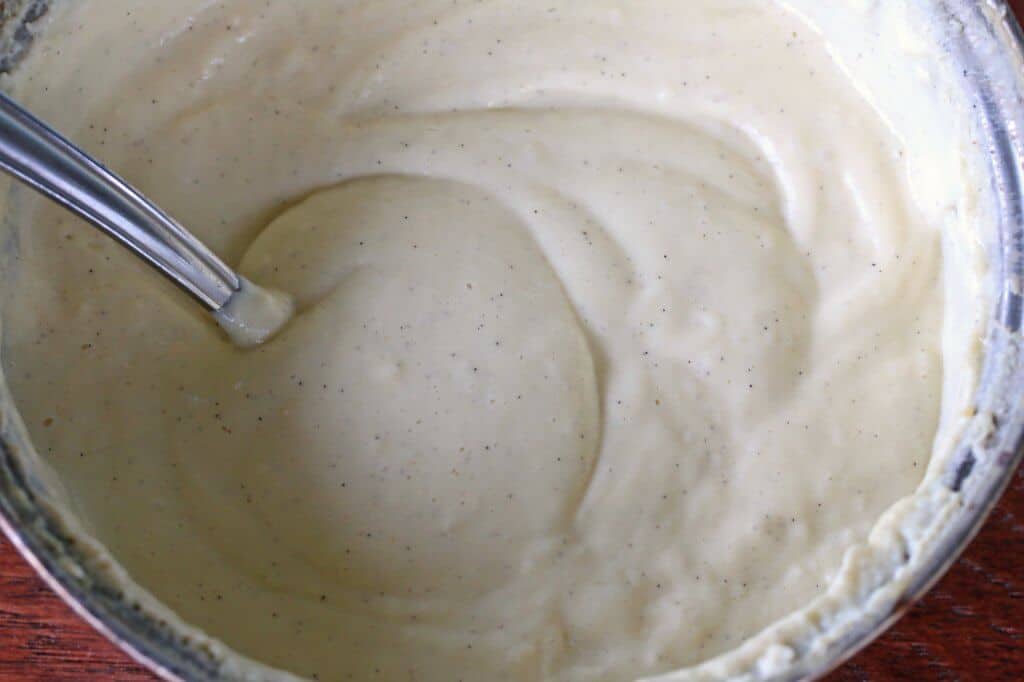
Cover and chill.
This custard can be made a day in advance and refrigerated.

For another delicious variation try our Eggnog Custard!
Save This Recipe

Vanilla Custard (Crème Anglaise)
Ingredients
- 1 cup heavy cream
- 1 cup whole milk
- 4 large egg yolks
- 1 tablespoon quality vanilla bean paste not extract or one vanilla bean, slit open lengthwise)
- 1/3 cup granulated sugar
- 2 teaspoons cornstarch
Instructions
- In a medium-sized bowl, whisk together the egg yolks, sugar and cornstarch until the mixture is smooth.
- Heat the milk, cream and vanilla in a small saucepan just until bubbles form along the edges of the pan.
- Remove 1/2 cup of the hot cream and whisk it into the egg mixture, whisking constantly. Gradually pour the egg yolk mixture back into the saucepan with the rest of the cream mixture, whisking constantly to prevent clumping. Continue to cook, whisking constantly, until the mixture leaves a path on the back of spoon when you draw your finger across it. DO NOT BOIL.
- Cover and chill. Can be made a day in advance.
Notes
Nutrition



















Failed to thicken at 80 C. I had to try again with a couple of Tbs Birds Custard powder and it still wouldn’t thicken, so I bumped up to 100C. Then it worked, but the bottom caught. Should it be two tablespoons of cornstarch not two teaspoons? This seems very much insufficient.
Hi David, bringing it up to 80-85 C is sufficient. Yes, it’s 2 teaspoons, not tablespoons. The primary thickening agent is the egg yolks with some help from the cornstarch. This calls for 4 large egg yolks and the issue you had with it not thickening may have had to do with the egg size. I’ve encountered supposed “large” eggs that were actually medium sized. If you try this again I recommend adding an additional egg yolk.
I am extremely disappointed with this recipe. I tried making it twice (2nd time TRIPLING the amount of corn starch) and it came out like water. I followed your recipe to the letter and watched it like a hawk, with disastrous results. Never again.
Hi David, that’s honestly inconceivable. Just the cup of heavy cream and milk with 4 large egg yolks alone would result in a consistency vastly thicker than water, not to mention the addition of cornstarch – let alone THREE TIMES the amount of cornstarch….I assure you the issue does not like with the recipe.
So delicious. Made this in California to go with the Spotted Dick. Tasted like springtime on a plate :)
Thank you, Jennifer, I’m so glad you made and enjoyed them both! <3
I don’t know where you got this recipe from but it is wrong. Creme Anglaise was invented because the chef’s wife was allergic to eggs. So does not include any eggs. I think you may have a recipe for what we English call egg custard. And the rest of Europe simply calls “custard”
That is not correct, Paul. Crème Anglaise and English custard are one and the same. Crème Anglaise is simply the fancier French name for it (translates as “English cream”).
The custard is wonderful. I could happily eat it all up with a big spoon. Sadly, I have to watch my calories and cholesterol, so I have to take my sweets in small servings. How can I keep the custard and pudding fresh long enough for me to consume it before it goes bad. Freeze it?
Thanks so much, Jim, I’m glad you enjoyed it! Freezing it isn’t optimal as it will separate when thawed. Instead I would recommend making half the batch.
If you make the custard the day before, how do you reheat the custard?
Hi Jackie, reheat it in the saucepan on the stove stirring regularly to prevent a layer of skin from forming on top.
You do not reheat custard.
I have yet to find another recipe that calls for corn flour in this sauce. It obviously reduces the need for another egg yolk or two and also reduces the rich taste you get without corn flour.
This one calls for cornstarch – cornflour will change the taste, as ytou suggest.
This is a fantastic recipe and it was perfection. I love your photos and appreciate the links for the pan and vanilla paste. Please keep doing this and carry on this wonderful way of sharing your experience and delicious recipes. I found it very helpful and we LOVED it. I couldn’t find currants so I used dried wild blueberries instead. Now a family favorite. Thank you so much for posting and sharing your stories!
Thank you, Suz, I really appreciate your kind feedback and am so thrilled your family enjoyed it! <3